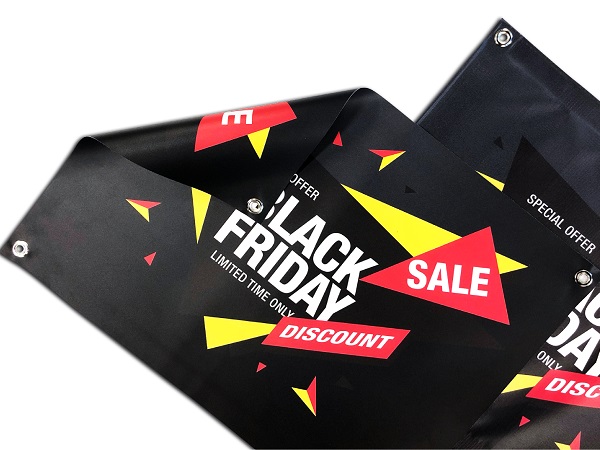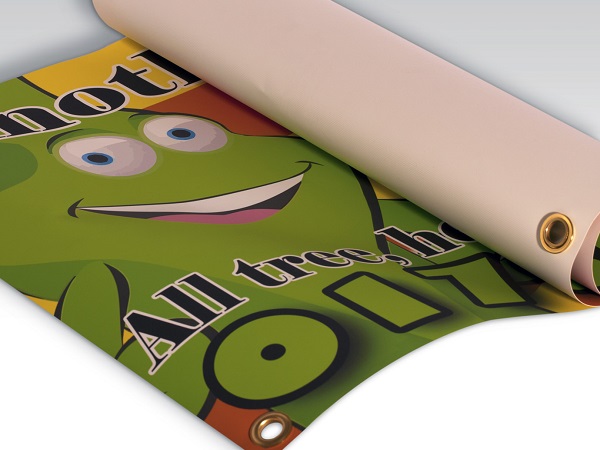Marketing in the 21st century has been defined by digital dominance. From targeted ads and emails to the social media explosion, digital marketing has more than earned its place at the table. Despite all of our advances in technology, however, some of the most effective marketing methods are still planted firmly in the real world.
Advertisements and information printed on banners — maybe one of the oldest marketing methods known to man — are still tough to beat when it comes to communicating your message quickly and effectively to a large crowd. Banners materials are a cost-effective way to bring your brand to life and help boost your business, and they come in a variety of weights, finishes and, most importantly, materials.



Vinyl and Canvas Materials
The most common material used for modern marketing banners is PVC vinyl banner material. Usually available in 13, 15 or 18-ounce weights, vinyl is a durable, flexible and portable solution perfect for trade shows, billboards, storefronts, and more.
The alternative to vinyl for your banner material is canvas, printed using a technique known as dye sublimation printing and most frequently made using:
Cotton, Nylon, Polyester, Though canvas banners can be aesthetically appealing, they have distinct disadvantages compared to the more cost-efficient vinyl material.
Self-adhesive Vinyl: A Sure Bet
Durability
The most obvious advantage of vinyl banners over fabric is their durability.
Vinyl banners are weather, wind and tear resistant, making them the perfect choice for outdoor use. Mesh vinyl can allow wind to pass harmlessly through the material, reducing the risk of flapping and tearing, and it’s also great at retaining its strength in the rain.
Canvas banners, on the other hand, are more delicate in the face of the harsh elements. They’re more fragile than vinyl banners and often require edge reinforcement (and thus additional costs) to prevent tearing in windy conditions.
Low Maintenance
When displayed outdoors, banners can quickly accumulate dirt and grime, requiring frequent washing. While canvas banners are easily stained and soiled, vinyl is simple to clean using water and soap or mild detergents.
Canvas banners are also susceptible to wrinkling and creases, which may require the use of a steam iron to correct. For a low-maintenance marketing solution, vinyl is the superior choice.
Printing Considerations
The choice of material affects how your design will look once it’s printed and displayed.
Most vinyl banners are created using either screen printing or digital printing on a wide format printer. This allows for bright, vibrant colors at an inexpensive price.
Vinyl is fade resistant as well, providing bold and beautiful designs that last longer than the alternative.
Canvas is not without its advantages, and when it comes to aesthetics the cloth material can be slightly superior to vinyl. The dye sublimation process, using heat and pressure to transfer an image directly to cloth, can produce a richer, more detailed design for your banner. In indoor, up-close scenarios, canvas has a small edge over vinyl prints.
Choosing the Right Material
There’s a host of factors that should be considered when designing your banner and choosing the right material, and collaborating with a quality creative partner like The Slate Group can help answer your printing questions and guide you through every step of the process from design to deployment.
Where am I going to be displaying it, and for how long? Is it going to be subject to wind and weather? How frequently will I need to transport it? In most scenarios, a vinyl banner will provide the most enduring, effective, and inexpensive means of conveying your message.




